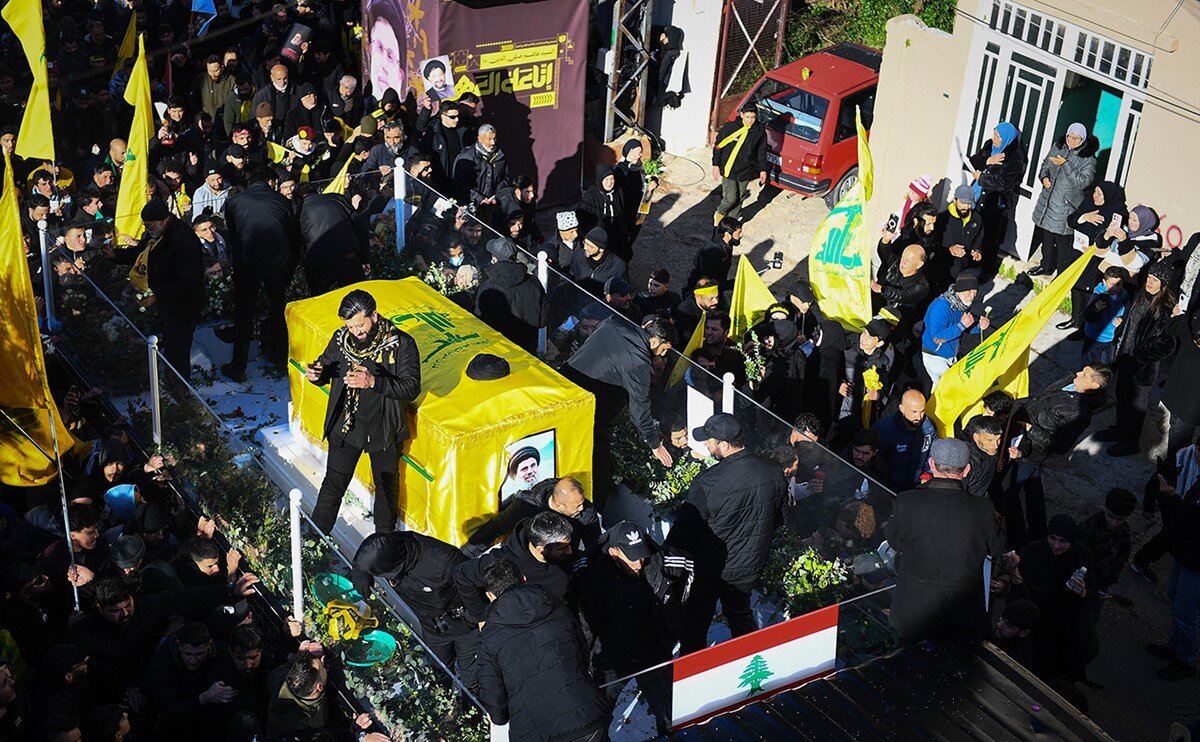Sayyed Hashem Safieddine: A humble scholar and leader

SOUTH LEBANON – Martyr Sayyed Hashem Safieddine was buried on Monday in his hometown of Deir Qanoun al-Nahr in Tyre District.
The funeral was attended by a crowd of religious scholars, as well as political and social figures who had flocked from various Lebanese regions along foreign delegations, including Ayatollah Khamenei’s representative Sheikh Mohammad Hassan Akhtari, and the Mufti of the Republic of Yemen, Sheikh Shamsuddin Sharafuddin.
Before performing the funeral prayer for the martyr, a group of resistance fighters took the oath of allegiance for his pure soul to perpetuate his jihadi mission.
Safieddine was born on February 25, 1962, in the town of Chiyah, south of Beirut. He was raised based on the teachings of Islamic values and was influenced by Martyr Sayyed Muhammad Baqir al-Sadr and Imam Khomeini, which prompted him to move from university studies to religious studies in Qom Seminary from 1981 to 1994 before returning to Lebanon to initially assume responsibility for the Beirut region of Hezbollah.
In 1995, he assumed the presidency of Hezbollah’s Jihadi Council before becoming a member of the Shura Council in 1998. Then, he headed the Executive Council and became responsible for implementing internal policies, developing the administrative structure, and supervising Hezbollah’s institutions.
Sayyed Safieddine gained diverse experiences on various political, cultural, and social issues. He was distinguished for his close follow-up of Hezbollah institutions and people’s affairs. One of his prominent achievements was his leadership of reconstruction efforts after the July 2006 U.S.-led Israeli aggression on Lebanon.
In 2017, Washington included him on its so-called “terrorism lists” and imposed economic sanctions on him.
In 2020, his son, Sayyed Reza, married Zeinab Soleimani, the youngest daughter of Martyr General Qassem Soleimani.
What is striking about the relationship between Sayyeds Safieddine and Nasrallah – in addition to kinship – is the similarity between them in appearance and voice.
Safieddine was considered the second most important figure in Hezbollah after Sayyed Hassan Nasrallah was martyred on September 27. After the latter’s assassination, it was rumored that he would be his successor.
He got martyred on October 4, 2024, following the Israeli raid on the Laylaki suburb south of Beirut. After the assassination, Netanyahu stated: “Israel assassinated the successor to Nasrallah.”
The enemy prevented the paramedics from approaching the site, targeting them more than once. The Red Cross mediated with UNIFIL to evacuate the wounded. However, the enemy insisted on preventing them for three consecutive weeks.
Hezbollah’s statement read, “Sayyed Safieddine was the best brother who comforted his brother [Sayyed Nasrallah] and was the source of his trust. He relied on him in times of hardship and was his guarantor in difficulties. He has passed away, supporting the religion of God, pious, righteous.”
Martyr Sayyed Safieddine enjoyed a beloved personality among the resistance fighters and their families. He was widely respected by the people as he was aware of their conditions. He was keen to solve their problems, especially during the Covid-19 pandemic.
Safieddine encouraged the recording of the biographies of the martyrs to preserve their honorable legacy. He cared a lot about the popular hymn “Peace, O Mahdi” (Arabic version of Salam Farmandeh).
Spiritually, he was extremely faithful and grateful. He was well-mannered, broad-minded, and forbearing to the point that he deterred any attempt to backbite even his opponent.
Safieddine was keen on Islamic unity. During the 2021 Tayouneh massacre committed by the Lebanese Forces, he was working hard to prevent sectarian strife sought by the American embassy in Beirut.
Leave a Comment